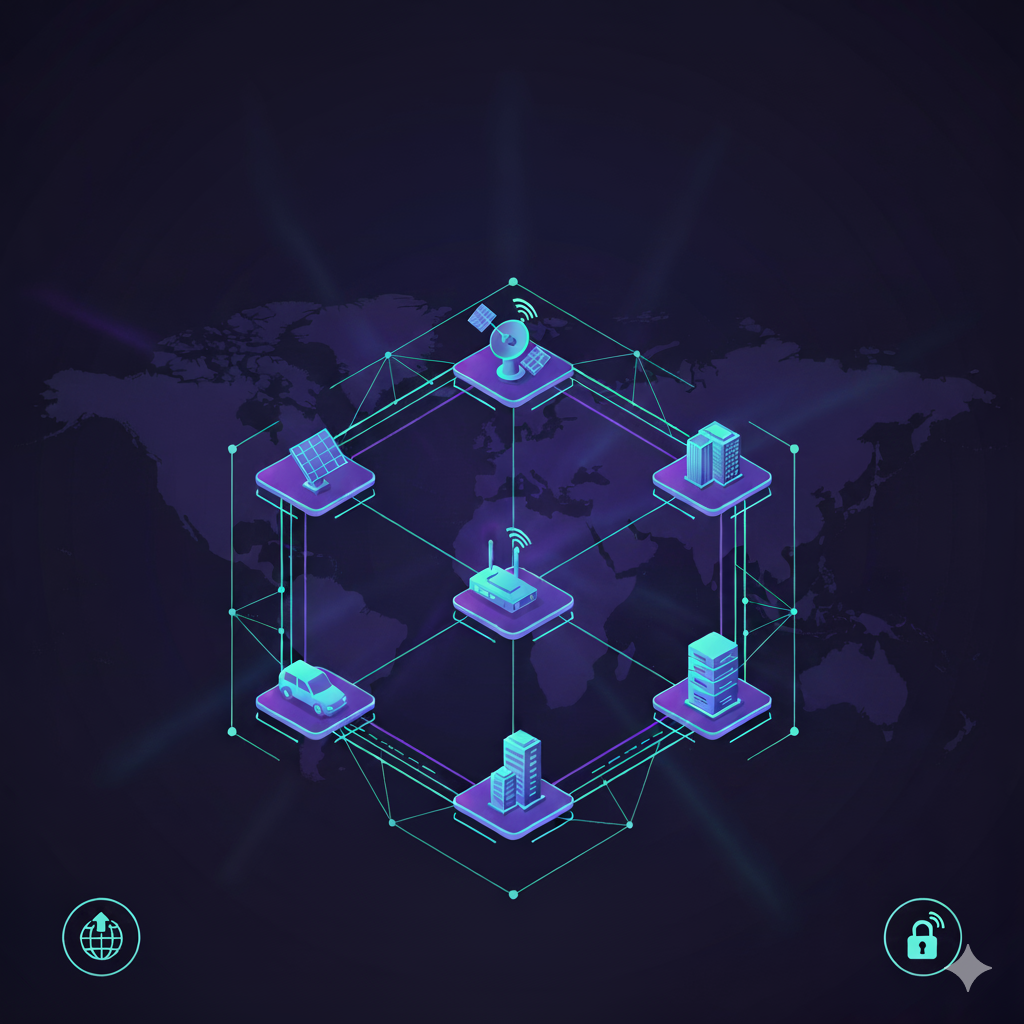At Follower Magazine, we are constantly exploring the innovations reshaping digital and physical infrastructures. One of the most exciting frontiers today is DePIN short for Decentralised Physical Infrastructure Networks.
DePIN represents the merging of blockchain with real-world infrastructure, allowing communities to collaboratively build, own, and operate networks that were once dominated by centralised corporations. From connectivity to energy grids, DePIN introduces a model where participants are rewarded for their contributions, creating a transparent and efficient system.
What Exactly Is DePIN and Why Does It Matter
DePIN refers to blockchain-powered networks that govern physical infrastructures. Instead of relying on a single central operator, ownership and participation are spread across a community. Participants provide resources such as storage, bandwidth, or energy, and in return, they earn incentives.
This matters because it transforms the way infrastructure is created and managed. Traditional systems often involve high costs, monopoly control, and inefficiencies. With DePIN, infrastructure becomes scalable, affordable, and powered by the people who use it.
How DePIN Bridges Digital and Physical Worlds
The brilliance of DePIN lies in its ability to connect physical resources with blockchain-based coordination. Every contribution, whether it’s data storage or providing wireless coverage, is recorded transparently on the blockchain. Smart contracts handle rewards, while decentralisation removes bottlenecks, making infrastructure more resilient and trustworthy.
Core Benefits of DePIN Adoption
Empowering Communities
Communities no longer depend on central providers. They can build and manage networks themselves while sharing in the value created.
Reducing Costs
By eliminating middlemen, DePIN significantly lowers infrastructure costs, making essential services like internet and energy more affordable.
Increasing Transparency
Blockchain records every transaction, ensuring trust and reducing the risks of corruption or mismanagement.
Driving Innovation
Open participation allows startups, developers, and individuals to experiment and create new solutions on top of existing networks.
Real-World Applications of DePIN
| Sector | Use Case Example | Impact on Users |
| Connectivity | Decentralised Wi-Fi and 5G networks | Affordable access to global users |
| Energy | Community-driven renewable grids | Sustainable and shared resources |
| Storage | Distributed data hosting platforms | Secure and censorship-resistant |
| Mobility | Shared electric vehicle charging | Efficient and eco-friendly transport |
| Sensing | IoT networks for smart cities | Real-time, community-owned insights |
How DePIN Differs From Traditional Models
Traditional infrastructure relies on centralised companies with high capital investments. DePIN flips the model by enabling individuals to contribute resources and earn rewards.
| Feature | Traditional Infrastructure | DePIN Model |
| Ownership | Centralised corporations | Community-driven |
| Costs | High, with intermediaries | Lower, direct participation |
| Transparency | Limited, opaque | Full blockchain record |
| Innovation | Slower, controlled | Open, collaborative |
Steps in Building a DePIN Network
Identifying Infrastructure Needs
Communities or startups begin by pinpointing a gap, such as affordable internet or renewable energy.
Incentivising Participation
Tokens or digital rewards are offered to attract contributors who provide resources like bandwidth, storage, or power.
Deploying Hardware and Software
Participants set up devices that interact with blockchain protocols, ensuring that contributions are tracked.
Scaling Through Collaboration
As more participants join, the network grows stronger, delivering better coverage and services for all.
Challenges Facing DePIN Projects
Regulatory Uncertainty
Governments worldwide are still grappling with how to classify and regulate DePIN initiatives.
Technical Barriers
Setting up and maintaining devices requires technical knowledge, which can be a barrier for wider adoption.
Trust in New Models
Convincing communities to adopt decentralised systems takes time, especially where centralised infrastructure is deeply rooted.
The Economic Model of DePIN
DePIN operates on token economics. Participants contribute resources and are compensated in tokens, which can be traded or used within the ecosystem. This creates a cycle where the more valuable the network becomes, the more valuable the tokens are.
DePIN and the Future of Smart Cities
As cities evolve, DePIN is poised to play a major role in smart infrastructure. Community-powered IoT sensors, decentralised energy grids, and shared mobility solutions could become the backbone of urban living, creating cities that are sustainable, efficient, and inclusive.
Misconceptions About DePIN
Only for Tech Experts
While DePIN involves blockchain, many projects are user-friendly and designed for everyday participants.
Not Secure
Blockchain ensures transparency and security, making DePIN safer than centralised models in many cases.
Just Another Crypto Trend
Unlike speculative projects, DePIN has real-world utility and is directly tied to tangible infrastructure.
FAQ
What is DePIN in simple terms?
DePIN is a blockchain-based system where communities build and own physical infrastructure like internet networks or energy grids.
Why is DePIN important?
It reduces costs, increases transparency, and empowers communities to manage their own infrastructure.
Can anyone participate in DePIN?
Yes, individuals and businesses can contribute resources such as bandwidth, storage, or power to earn rewards.
What makes DePIN different from other blockchain projects?
DePIN connects digital technology with real-world physical infrastructure, offering practical benefits beyond financial speculation.
What industries will benefit most from DePIN?
Connectivity, energy, storage, mobility, and smart city applications are among the sectors with the highest potential.
Conclusion
DePIN is redefining how societies build and manage infrastructure. By merging blockchain with physical networks, it empowers communities, enhances transparency, and lowers costs. At
Follower Magazine, we see DePIN as a driving force in shaping the decentralised future of infrastructure, where power is shared and opportunities are open to all.


